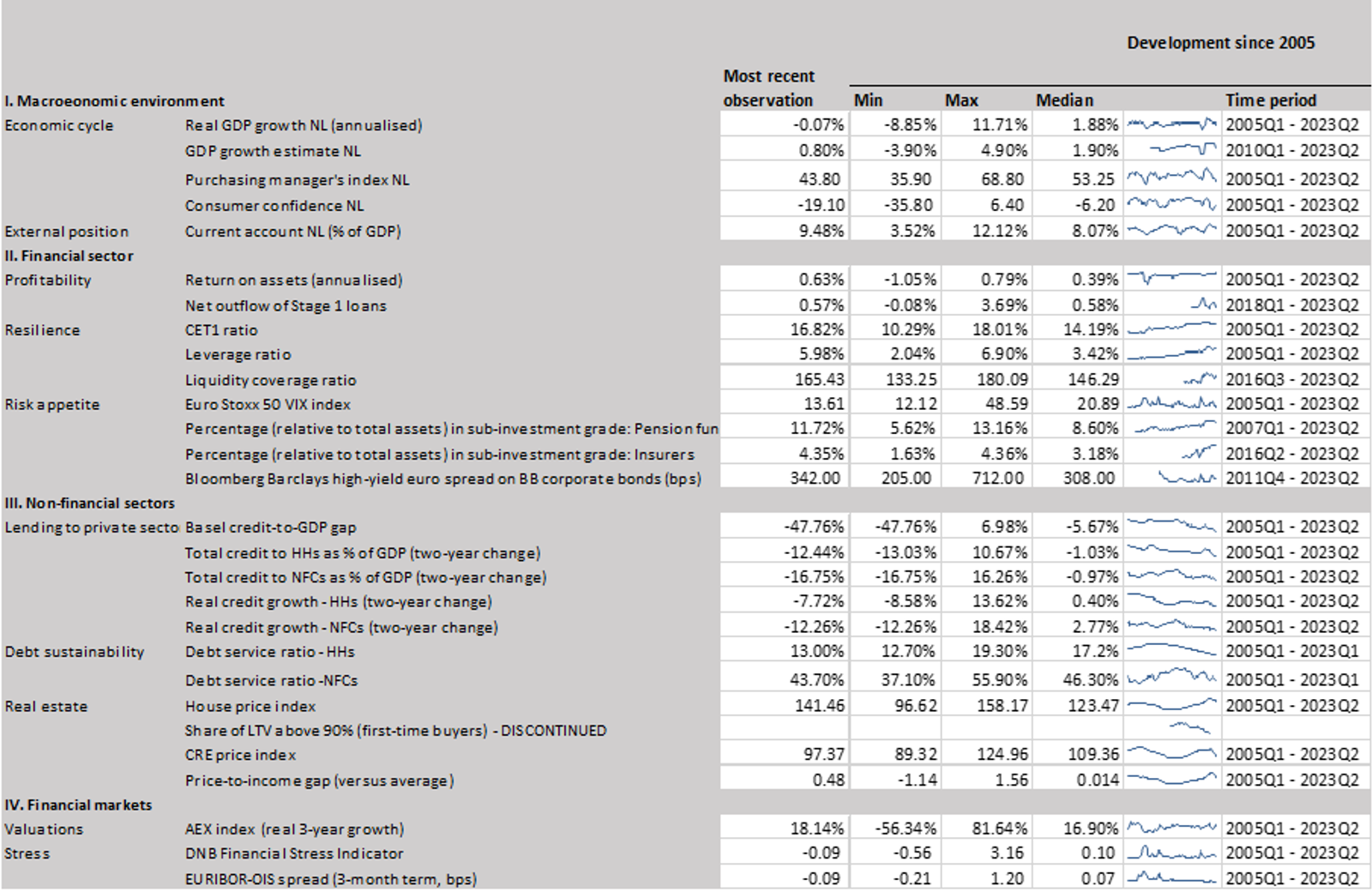The purpose of the CCyB is to increase banks' resilience as cyclical risks build up, and to release the buffer as soon as risks materialise. This gives banks additional headroom to absorb losses in bad times, and supports lending to businesses and consumers, thus limiting the immediate impact of a crisis on the real economy. The CCyB applies to domestic exposures and has a mandatory reciprocity of up to 2.5%. Therefore, foreign banks with exposures in the Netherlands must also hold capital due to the 2% CCyB.
In accordance with our framework for establishing the CCyB, we aim for a 2% CCyB in a “standard” risk environment, i.e. a situation where cyclical systemic risk is neither particularly high nor particularly low. In doing so, we seek to better take account of the inherent uncertainty involved in measuring (cyclical) systemic risk. We then determine the level of the CCyB on the basis of a varied set of indicators (including the credit gap shown in Chart 1) that interpret the phase of the cyclical systemic risk and compare it with a structural trend (Table 1).
Our Spring 2023 Financial Stability Report contains a detailed description on why we think a 2% CCyB is suited for the current risk environment. Further, in this Financial Stability Report we also announced that we would reconsider the announced increase to 2% if financial stability risks materialised during the build-up period. For now, we see no reason to reconsider the CCyB's increase to 2%.






